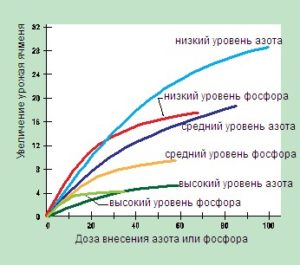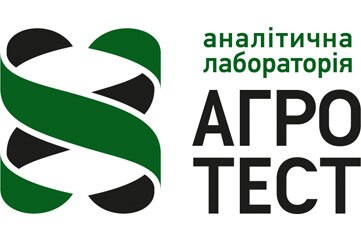What you need to know when fertilizing
What you need to know when fertilizing:
• what nutrients, and in what amount are in deficit in the soil
• sensitivity of plants to introduced fertilizers (elements)
• estimating the profit / increase of the crop when fertilizing
The more precise these three factors will be determined, the more profit and efficiency of fertilizer use will be. In this article, for each of the main nutrients (nitrogen, phosphorus, potassium and sulfur), is considered the value of the element and the sensitivity of crops to its introduction.
Nostalgic
Doses of nitrogen fertilizers can lie in a wide range. The difference in the requirements of crops to nitrogen fertilizers is the result of large differences in the amount of nitrogen in the soil and the amount of nitrogen consumed by the harvest. The potential for increasing the yield is a major factor in the effective use of nitrogen fertilizers.
Ground nitrogen
Does legume crops receive nitrogen from three main sources:
• Nitrogen available in the soil
• nitrogen of the soil, obtained from organic matter and cultivar residues
• Nitrogen fertilizers
Typically, the total amount of nitrogen (nitrogen stored in the soil plus nitrogen, obtained from the soil during growth) is not enough to produce high yields. Due to a short agricultural season, only one quarter of all nitrogen needed for crops is supplied to plants from the soil. The amount of available nitrogen in the soil greatly affects the amount of nitrogen fertilized. Soil analysis is the most accurate way to determine the level of nitrogen in the soil. If there is no soil analysis, then the history of the field and past experience may be useful sources of this information.
Usually for grains and oilseeds leaving after ‘para’ there is no deficiency in nitrogen, but a significant percentage of soil samples taken on ‘steam’ fields, shows the need for additional nitrogen. For example, the recommendations based on the analysis of soil, indicate that 30-40% of steam fields need to make from 20 kg / ha nitrogen and more. However, the percentage of samples with nitrogen deficiency increases from year to year.
For a long time, unused fields usually lack the available nitrogen and require high doses of nitrogen fertilizers. In these fields, there is usually an average level of available nitrogen. However, the annual results of soil analyzes show that large changes in nitrogen levels occur in the fields. For example, the number of fields with low content of available nitrogen ranged from 25% to 85% over the 10-year period.
The past experience, field history and general recommendations are a useful reference material for the application of nitrogen fertilizers, but changes in available nitrogen, which can occur year after year, are the main argument in favor of soil analysis in order to accurately determine the need for nitrogen fertilizers.
Estimation of culture sensitivity to nitrogen fertilizers
In order to assess the economic efficiency of using fertilizers, an estimate of the yield increase from the rate of input should be made. The following are factors that may affect the sensitivity of the culture to the fertilizer.
Nitrogen available
This is the nitrogen of the soil available to the plant during its growth; is one of the main factors that affects the sensitivity of culture to the added nitrogen fertilizer. The amount of nitrogen can be estimated based on the history of the field, but more accurately determined by agrochemical analysis of the soil.
Soil moisture reserves
Very influences the yield of the crop and its sensitivity to nitrogen fertilizers. On brown, chestnut and gray soils, it is imperative to consider the moisture reserves in the soil, choosing the dose of fertilizer. In loamy brown and dark brown soils, soil moisture at a depth of 70-75 cm is considered adequate for the stable growth of crops (on clay soils – at a depth of 50-55 cm). When moisture reserves in the soil exceed these levels, higher doses of nitrogen fertilizers will provide positive economic efficiency. If moisture is concentrated throughout the root zone (90-120 cm), the recommended double doses of nitrogen may be economically justified.
Weed competition
Weeds reduce the potential of crop yields and compete for introduced nitrogen fertilizers. The introduction of high nitrogen fertilizer rates with a significant amount of weeds is unwarranted.
Deferred or late crop
This factor usually reduces the sensitivity of crops to nitrogen fertilizers. Crop yield potential will be reduced, as the culture can receive more nitrogen from the soil during the late growth. Late crops may have a higher risk of frostbite loss and poor weather conditions during harvesting.
Diversity of cultures
Cultures with high yield potential respond better to higher doses of nitrogen fertilizers than crops with lower yield potential.
The profit from the applied nitrogen fertilizer can easily be calculated if a correct assessment of the sensitivity of the culture to the fertilizer is made. Some soil analysis laboratories plan to increase the yield from the amount of nitrogen introduced, based on data from the analysis on available nitrogen, on the type of soil, location of the site, previous harvests. Farmers can use these results in conjunction with their own experience, current moisture reserves, etc. to determine the optimal dose of fertilizer.
Phosphorus
Unlike nitrogen, available phosphorus tends to be more constant for certain fields or types of soil and does not change widely from year to year when using soil. The rate of phosphorus application will depend on the following factors:
• The level of available phosphorus in the soil
• The need for a culture in phosphorus to produce the planned yield
• conditions for the growth and development of culture
For non-irradiated grain crops, phosphate fertilizer requirements are much higher. Cool, wet conditions in the early stages of growth increase the sensitivity of culture to the added phosphorus. In addition, phosphorus fertilizers contribute to an earlier and even maturing of the crop.
Review crop and rate
The need for phosphate fertilizers can be determined based on common tables, but more precisely only when analyzing the soil. Figure 1 shows the sensitivity of barley to phosphate fertilizers, which occurs in a narrower range of doses than for nitrogen (rates of application: 10-20 kg / ha of phosphate fertilizers in soils with high levels of available phosphorus and 45-60 kg / ha of phosphate fertilizers on soils with low levels of available phosphorus).

Potassium
Potassium is often a scarce element in certain areas and in some types of soils. Potassium deficiency is most often found on sandy, limy soils and soils with poor surface drainage.
Potassium is an important part of an effective fertilizer program when the potassium concentration in the soil is low. For example, barley is more susceptible to potassium than other cereal crops. Potatoes have very high requirements for potash, so its potassium needs are higher than other crops.
The visual increase in potash fertility is often less marked than that of phosphorus and nitrogen fertilizers. If potassium is introduced on experimental sites, the crop must be carefully measured and not visually assessed. A comparison of the yield obtained with the introduction of potassium and without introduction should be made when applied levels and adequate norms of nitrogen and phosphorus.
The sensitivity of culture to potassium chloride is sometimes observed on soils that are not scarce in terms of potassium, according to soil analysis. A preliminary study shows that these reviews are due to chloride. The introduction of chloride reduces the likelihood of plant diseases. Soil analysis on chloride is used to recommend the introduction of chloride. Soil analysis should be conducted to determine the effectiveness of introducing potassium chloride on soils that are not scarce with respect to potassium.
Sulfur
On different soils, plants may have a shortage of sulfur. Sulfur deficiency rarely grows on steam crops, but is often found on legumes, grains and oil crops that have been well fertilized with nitrogen fertilizers. Spera requirements for rape and legumes are much higher than for cereal crops.
The need for sulfur fertilizer can be determined by soil analysis. To obtain results on the sensitivity of cultures to the introduction of various doses of sulfur fertilizers on experimental sites, it is necessary to compare the options of experience with the introduction of sulfur and without it, using equal and adequate norms of nitrogen and phosphorus. Sulfur fertilizers are inexpensive, due to the low amount of required sulfur (10-35 kg / ha). The introduction of sulfur, when necessary, will be highly effective.
Write to us
and we will find an opportunity
for cooperation


